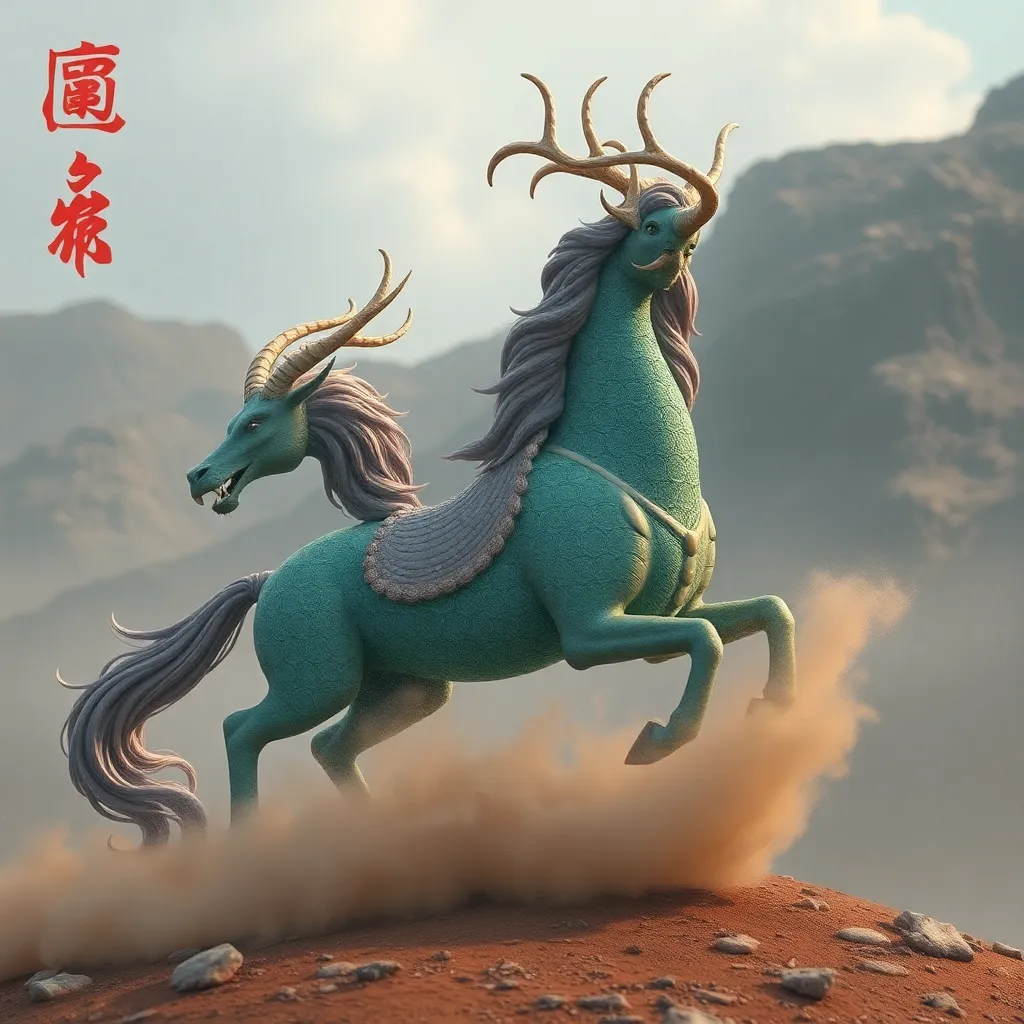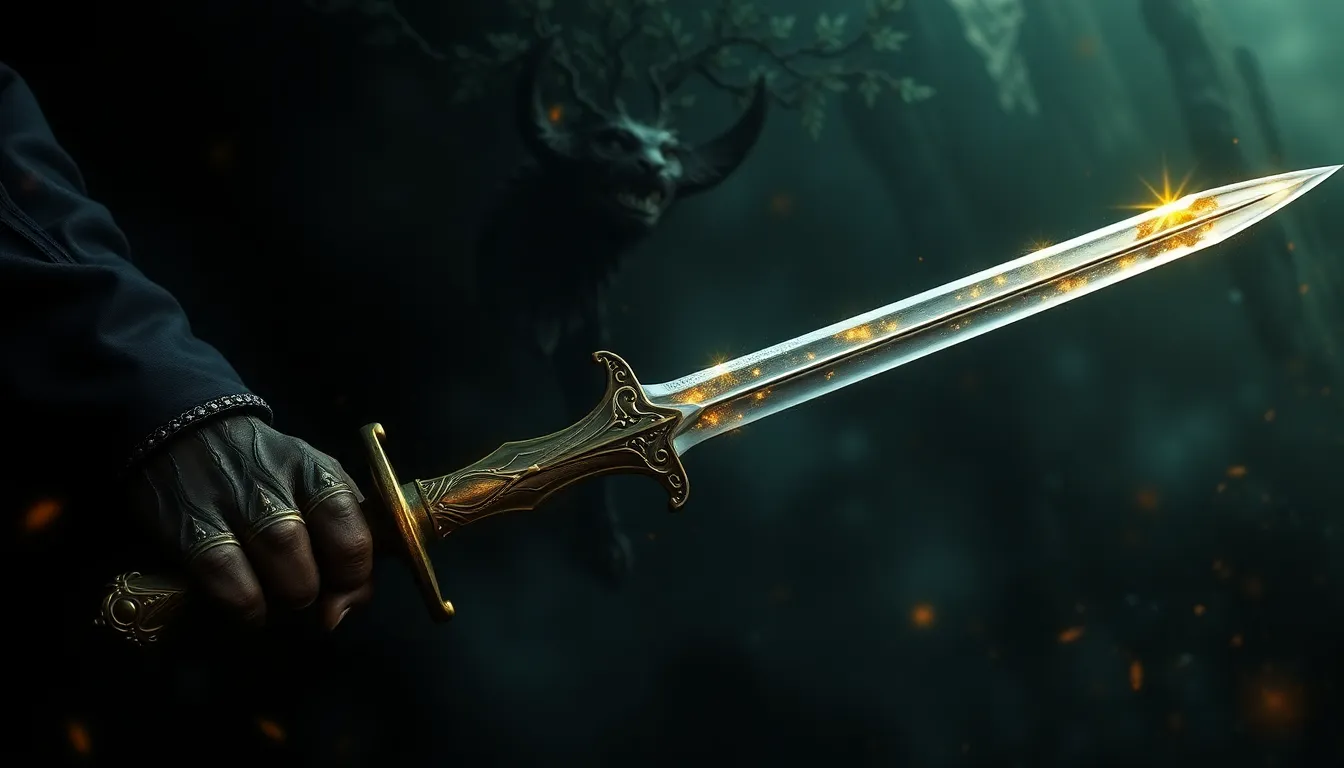The Hippogriff’s Flight to the Afterlife: An Egyptian Perspective
I. Introduction
The Hippogriff, a mythical creature with the body of a horse and the wings and head of an eagle, has captured the imagination of many throughout history. Originating in the works of medieval folklore, the Hippogriff symbolizes the union of the earthly and the divine. In contrast, ancient Egyptian culture placed immense significance on the afterlife, viewing it as the ultimate destination for the soul. This article aims to explore the intersection of the Hippogriff myth and Egyptian beliefs about the afterlife, examining how these narratives can intertwine and enrich our understanding of both.
II. The Hippogriff: A Creature of Myth and Symbolism
A. Description and origins of the Hippogriff
The Hippogriff was first popularized by the poet Ludovico Ariosto in the 16th century through his epic poem “Orlando Furioso.” Often depicted as a majestic beast, it represents a fantastical blend of various animals, symbolizing qualities such as nobility, strength, and freedom.
B. Symbolic meanings associated with the Hippogriff
- Freedom: The Hippogriff’s ability to soar through the skies embodies the idea of liberation.
- Duality: Its mixed heritage reflects the harmony between different realms, such as the earthly and the celestial.
- Adventure: The creature’s mythical status invites exploration and discovery beyond the ordinary.
C. The Hippogriff in popular culture and literature
In modern times, the Hippogriff has appeared in various forms of media, from literature to films, often symbolizing courage and the pursuit of one’s dreams. Notably, J.K. Rowling’s “Harry Potter” series has introduced the Hippogriff to a new generation, showcasing its majestic nature and the bond between humans and magical creatures.
III. Ancient Egyptian Beliefs About the Afterlife
A. Overview of Egyptian cosmology and the afterlife
In ancient Egyptian culture, the afterlife was a central aspect of cosmology. It was believed that the soul embarked on a journey after death, facing trials and judgments before reaching the eternal realm of the dead, known as the Field of Reeds.
B. Important deities and figures associated with the afterlife
- Osiris: The god of the afterlife, resurrection, and agriculture, Osiris was crucial in guiding souls to their eternal home.
- Anubis: The god of mummification and the afterlife, Anubis was depicted as a jackal and was responsible for protecting the dead and overseeing the weighing of the heart.
- Ma’at: The goddess representing truth and order, Ma’at was integral in the judgment process, ensuring that souls were weighed against her feather of truth.
C. Rituals and practices for ensuring a safe passage to the afterlife
Ancient Egyptians practiced elaborate rituals, including mummification and burial rites, to prepare the deceased for the afterlife. These practices were designed to honor the dead and ensure their safe passage, highlighting the importance of the afterlife in their culture.
IV. The Role of Animals in Egyptian Afterlife Beliefs
A. Significance of animals in Egyptian mythology
Animals held significant roles in Egyptian mythology, often representing various deities or embodying specific qualities. They were believed to act as intermediaries between the human world and the divine.
B. The concept of animal guides in the afterlife
Many Egyptians believed that animals could serve as guides for the soul in the afterlife. These guides were thought to assist in navigating the trials faced during the journey to the afterlife.
C. Comparing the Hippogriff to other mythical creatures in Egyptian lore
Similar to the Hippogriff, other mythical creatures in Egyptian lore, such as the sphinx and the griffin, represented a blend of animal traits. These creatures often symbolized wisdom, protection, and guidance, making them important figures in the context of the afterlife.
V. The Journey of the Soul: The Flight to the Afterlife
A. Metaphorical interpretations of flight in mythology
Flight is a powerful metaphor in mythology, representing transcendence and the journey of the soul. In many cultures, including Egyptian, the act of flying symbolizes liberation from the constraints of the physical world.
B. The significance of the journey in Egyptian afterlife beliefs
The journey of the soul in Egyptian beliefs was fraught with challenges, such as facing demons and navigating treacherous landscapes. Success in this journey ensured a place in the afterlife, underscoring the importance of proper preparation and guidance.
C. How the Hippogriff embodies the concept of ascending to the afterlife
The Hippogriff, with its majestic wings and ability to soar, embodies the concept of ascension. It symbolizes the soul’s potential to rise above earthly confines and achieve immortality in the afterlife, aligning it closely with Egyptian beliefs about the journey of the soul.
VI. Artistic Representations of the Hippogriff and the Afterlife
A. Analysis of ancient Egyptian art depicting mythical creatures
Ancient Egyptian art is rich with depictions of mythical creatures, often symbolizing the dual nature of existence. Creatures like the sphinx represent both protection and the mysteries of the afterlife, paralleling the Hippogriff’s symbolism.
B. The Hippogriff in modern interpretations and artistic expressions
In contemporary art, the Hippogriff continues to inspire, often depicted as a symbol of freedom and adventure. Artists explore its duality, portraying it in various forms that resonate with themes of mythology and spirituality.
C. Symbolic elements in art that reflect the afterlife journey
Artistic representations of the afterlife often incorporate elements of flight, transformation, and guidance, mirroring the journey depicted through the Hippogriff’s narrative. These artworks serve as reminders of the beliefs surrounding death and rebirth in both Egyptian and broader mythological contexts.
VII. Cultural Fusion: The Hippogriff and Egyptian Mythology
A. The influence of Hellenistic culture on Egyptian beliefs
The Hellenistic period saw significant cultural exchanges between Greek and Egyptian societies. This fusion led to the blending of mythologies, where creatures like the Hippogriff may have found parallels in Egyptian lore.
B. Possible historical connections between the Hippogriff and Egyptian symbolism
While the Hippogriff itself is a product of European folklore, its symbolic representation of duality and transcendence resonates with the themes found in Egyptian mythology. This connection invites further exploration of how these mythologies influenced one another.
C. The blending of mythologies in a multicultural context
The blending of mythologies illustrates the universality of certain themes, such as the afterlife, transformation, and the journey of the soul. This cultural synthesis enriches our understanding of both the Hippogriff and Egyptian beliefs, highlighting the interconnectedness of human experience across time and space.
VIII. Conclusion
In summary, the Hippogriff serves as a fascinating lens through which to view ancient Egyptian beliefs about the afterlife. The creature’s symbolism of ascension and freedom parallels the Egyptian understanding of the soul’s journey after death. By examining mythological creatures within their cultural frameworks, we gain deeper insights into the values and beliefs that shape human experience. The enduring legacy of the Hippogriff, alongside the rich tapestry of Egyptian mythology, continues to inspire and intrigue, reminding us of the timeless nature of these narratives.



